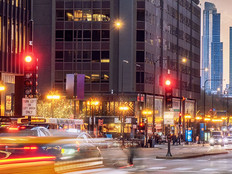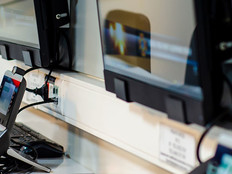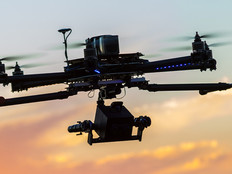The Operational Benefits of Deploying Public Safety Tech Innovations
Public safety agencies have increasingly turned to advanced and emerging technologies, including mobile command centers and drones, to make their operations more efficient. In 2019, first responders will likely begin deploying 5G wireless network technologies to use in critical communications, indoor location and situational awareness and other areas.
Yet it’s one thing to talk about cutting edge tech and another to actually roll it out and see the benefits of these innovations. What changes do these new kinds of tools actually bring?
All of that comes down to which specific tools public safety agencies choose to deploy and how they do so. However, in general, these innovations led to increases in efficiency and enhanced speed and accuracy in decision-making. They also provide more operational intelligence for dispatchers and first responders.
Public Safety Tech Delivers Faster, More Accurate Decisions
Over the past several years, surveillance cameras became more widespread, and IP-based video cameras can “improve security, discourage people from committing crimes, provide first responders with situational awareness, help police solve crimes and serve as evidence to secure convictions,” StateTech reported.
New advances in video surveillance cameras, analytics and automated response “make video a powerful tool that departments can use to extend their vision and increase the speed and precision of decision making,” according to a white paper from Cisco Systems.
Video surveillance brings numerous operational benefits to public safety agencies, the white paper notes. Since IP-based cameras can run 24 hours per day and can be programmed to alert appropriate personnel when specified events occur, they can reduce staffing costs. Additionally, software that automates the back-end video management cuts labor costs, the report notes. Cameras also can help dispatchers send the appropriate level of force to respond to events, saving time and money. Video surveillance also acts as a force multiplier, the white paper says. “Increasing the effectiveness of a 100-person force by 10 percent is like hiring 10 more officers. In most departments, these savings would amount to more than $1 million annually in fully burdened personnel costs.”
Video surveillance is, of course, not the only tool public safety agencies can use to enhance their decision-making. The Internet of Things and smart cities tools also enhance public safety. This is especially true in the areas of fire detection, notification and extinguishing.
Connected sensors that detect fires in buildings may do so faster and also send dispatchers more information about the fires, such as “areas with smoke, identification of specific particulates, presence of hazmat, temperatures and video from impacted areas,” Firehouse.com notes. Additionally, sensors that provide enhanced location services will help firefighters find 911 callers and each other more easily.
“This will be especially important in high-rise buildings and will greatly enhance accountability and locating firefighters in a mayday situation, a phenomenal accomplishment in itself,” the publication adds.
MORE FROM STATETECH: Find out how to mitigate threats to public safety communications systems.
Tech Innovations Provide Greater Intelligence
Public safety agencies rely on operational intelligence to respond to emergency situations. Technology can boost the amount of collectable intelligence and help synthesize and analyze it so decisions can be made.
One way police forces can boost the amount of intelligence they collect is through the air, with drones. In December, the New York Police Department announced it had acquired 14 drones to help monitor crime in the city.
The drones will be operated by members of the NYPD’s Technical Assistance Response Unit who go through “vigorous training.” The NYPD says the unit’s expertise in audio/visual technology helps “enhance investigations through the recovery of surveillance video footage; record police action at large-scale demonstrations and arrest situations; and provide crucial live video to incident commanders during ongoing emergency situations.”
The police department says the drones will help it “gather crucial information as situations unfold without putting officers at risk and lessen harm and danger to civilian bystanders and other involved parties.”
In another example of improved capabilities through technology, the Las Vegas Metro Police Department launched a Technical Operations Section to help it fuse together intelligence.
“The Las Vegas Metropolitan Police Department says they are seeing tremendous success with their high-tech intelligence unit,” reports KTNV. “A network of public safety cameras, shot spotter technology that can listen and detect the location of gunfire in the valley, plus facial recognition software and automated license plate reader databases, all come together inside the Fusion Watch Center.”
At the end of the day, first responders benefit in numerous ways from the tech they deploy, but it’s all done to improve operations and support their public safety mission.
This article is part of StateTech's CITizen blog series. Please join the discussion on Twitter by using the #StateLocalIT hashtag.










